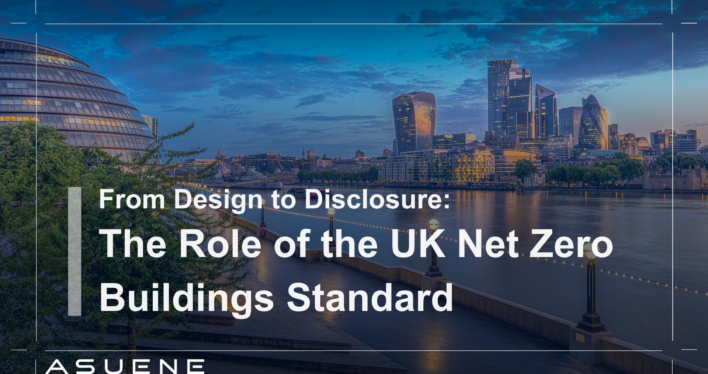- Article Summary
-
Introduction: Why the UK Needs a Unified Net Zero Buildings Standard
The built environment is responsible for around a quarter of the United Kingdom’s carbon emissions, making it one of the most critical sectors in the country’s climate transition. For years, the lack of a single, science-based benchmark for what constituted a truly net zero building created confusion among developers, investors, and occupiers. Terms like “net zero ready” or “operationally neutral” were often used inconsistently, weakening the credibility of climate claims across the construction and real estate industries.
The UK Net Zero Carbon Buildings Standard (UKNZCBS) was created to solve this challenge. Developed collaboratively by major professional bodies including the UK Green Building Council (UKGBC), the Chartered Institution of Building Services Engineers (CIBSE), the Royal Institute of British Architects (RIBA), and the Building Better Partnership (BBP), it sets a measurable definition of what net zero means for both operational and embodied carbon. The Standard provides clarity, transparency, and accountability, marking a step change in how climate performance is measured in buildings.
What the Standard Is and How It Was Developed
The UKNZCBS emerged from collaboration across industry leaders and consultancies, including 2050 Materials, Greengage Environmental, and Willmott Dixon. Its purpose is to provide clear carbon limits and performance metrics aligned with the UK’s legally binding commitment to reach net zero by 2050. The Standard draws from extensive research, stakeholder consultation, and pilot testing to ensure it reflects the realities of design, construction, and building operation.
Unlike earlier frameworks, the Standard is grounded in science-based targets aligned with a 1.5 °C pathway under the Paris Agreement. It sets out what emissions reductions are required to keep global warming within safe limits. Both new builds and retrofits are covered, with separate limits for each. This distinction ensures older buildings can transition realistically without undermining the integrity of the overall net zero goal.
By combining input from developers, engineers, architects, and sustainability professionals, the Standard represents a sector-wide consensus. It harmonises previously fragmented definitions and gives the construction sector a single language for climate accountability.

The Whole-Life Carbon Approach: Measuring the Real Climate Impact
At the heart of the Standard lies the Whole-Life Carbon (WLC) framework, which captures emissions from every stage of a building’s life. This approach recognises that a building’s environmental impact does not begin or end with its energy use.
Whole-life carbon combines two key components:
- Operational carbon, the energy-related emissions from heating, cooling, lighting, and appliance use throughout the building’s life. The Standard requires fossil fuel-free operation and encourages on-site renewable generation. To ensure accuracy, developers must verify actual performance data within the first twelve months of occupation.
- Embodied carbon, the emissions from materials extraction, manufacturing, transport, and construction. The Standard measures embodied carbon intensity in kilograms of CO₂ equivalent per square metre (kgCO₂e/m²) and sets clear limits by building type. It encourages the use of low-carbon materials, reuse strategies, and transparent reporting through Environmental Product Declarations (EPDs).
The whole-life carbon framework provides a comprehensive measure of climate impact, promoting design choices that reduce both operational demand and upfront emissions.
Accurate tracking through life cycle assessment (LCA) plays a central role in this process. By quantifying emissions at each stage of a building’s life, LCA provides the data foundation needed to meet the Standard’s verification requirements. Consistent monitoring also enables project teams to identify which materials or design choices have the largest carbon impact and adjust accordingly.
Implications for Developers, Designers, and Investors
The Standard has practical and strategic implications across the construction and finance ecosystem.
For developers, meeting the Standard means embedding carbon reduction targets at the concept stage. This requires early collaboration between architects, engineers, and suppliers to manage material choices and optimise energy use. Reliable carbon data and digital design tools, such as life cycle assessment (LCA) software, will be essential to meet performance thresholds efficiently.
For designers and engineers, the Standard introduces new responsibilities in balancing carbon budgets with cost, comfort, and compliance. The push for low-carbon materials will influence procurement, while lifecycle performance verification will become central to design validation. Collaboration with material databases like 2050 Materials can help identify lower-impact alternatives.
For investors and asset owners, the Standard introduces a robust benchmark for assessing real estate sustainability performance. Accurate carbon accounting and verification underpin investor confidence, ensuring that claims of net zero performance are credible and auditable. It enables comparable, science-based metrics across portfolios, supporting more reliable ESG reporting. Verified alignment with the Standard reduces exposure to greenwashing risks and enhances confidence for lenders and institutional investors seeking resilient assets. It also aligns with disclosure frameworks such as the EU Taxonomy, TCFD, and emerging sustainability assurance standards.
Reliable carbon accounting is equally important for ensuring that these design and investment decisions are transparent and verifiable. Measuring and reporting emissions across all stages of development helps stakeholders demonstrate compliance with the Standard and supports consistent ESG reporting.
In short, the Standard links technical performance with financial credibility, bridging the gap between sustainability and fiduciary duty.
| Stakeholder | Role in Carbon Lifecycle | Operational Carbon Responsibilities | Embodied Carbon Responsibilities |
|---|---|---|---|
| Developer | Leads project vision and ensures compliance with UKNZCBS targets | Integrate energy efficiency and fossil fuel-free systems from concept stage | Specify low-carbon materials and oversee lifecycle assessments |
| Designer / Engineer | Translates carbon targets into design and technical solutions | Optimise building systems and performance verification | Select sustainable materials and minimise construction emissions |
| Investor / Asset Owner | Evaluates and funds low-carbon projects | Monitor operational performance through ESG metrics | Require embodied carbon disclosure and reporting across portfolio |
| Occupier | Operates and maintains building responsibly | Adopt energy-efficient practices and demand management | Support reuse and maintenance strategies to extend asset life |
Conclusion: Toward a Transparent and Science-Based Built Environment
The UK Net Zero Carbon Buildings Standard is more than a technical framework. It represents a collective commitment to transparency and measurable action. By defining what genuine net zero performance looks like, it creates consistency across the property market and strengthens accountability within ESG disclosure.
For developers, the Standard provides clear design and data expectations that support credible decarbonisation. For investors, it enables informed decision-making and risk management based on quantifiable climate performance. For the UK, it establishes a blueprint for aligning the built environment with a 1.5 °C future.
As the Standard evolves through future iterations, its adoption will shape the competitiveness and credibility of the British property market. The path to net zero buildings now has a measurable direction, one built on science, collaboration, and a shared vision for a low-carbon built environment.
Why Work with ASUENE Inc.?
ASUENE is a key player in carbon accounting, offering a comprehensive platform that measures, reduces, and reports emissions. ASUENE serves over 10,000 clients worldwide, providing an all-in-one solution that integrates GHG accounting, ESG supply chain management, a Carbon Credit exchange platform, and third-party verification.
ASUENE supports companies in achieving net-zero goals through advanced technology, consulting services, and an extensive network.


